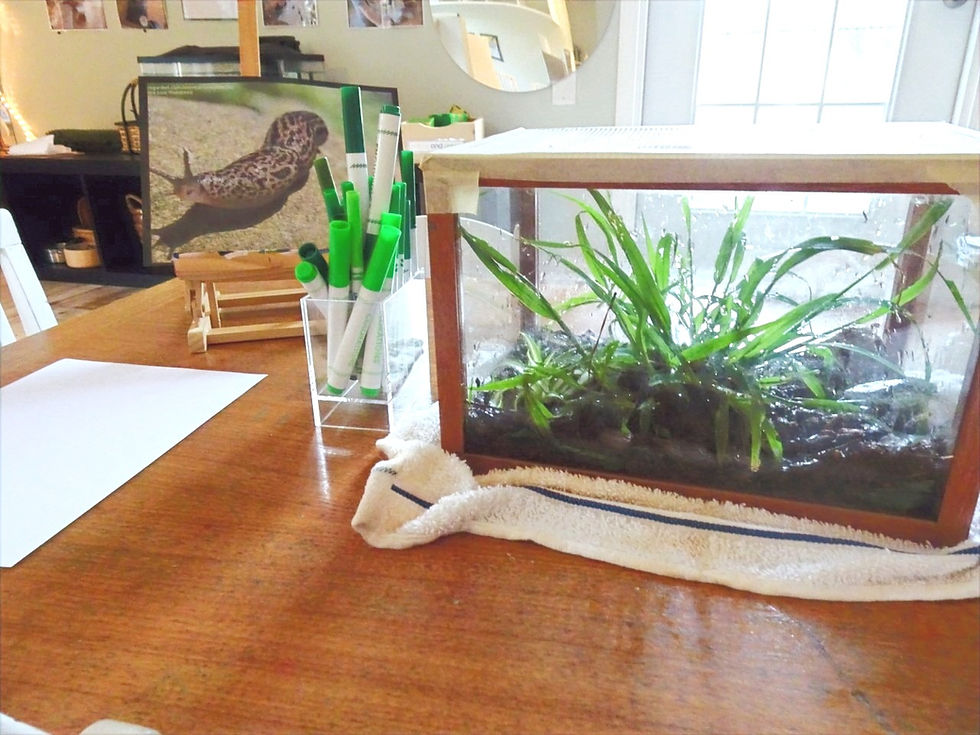
Our playground is a constant source of wonder for my students. The outdoor playground at my school is a certified wildlife habitat, and we are frequently stumbling upon creature friends in the form of birds, squirrels, butterflies, lizards and other creepy crawly things. There is something whimsical about observing living things up close that captivates young children. My class loves to observe the way creatures move, hide, and scurry. They love to ask questions like "where is it going?" and "where does he live?". It is always an exciting day when we get a visit from a new creature friend, and this week did not disappoint.

This is a leopard slug. He is not the handsomest fella, but meeting him has been the highlight of our week. One of my students found him at the bottom of our slide (after mistaking him for a poop, of course :-)). After we discovered his true identity, my little researchers set to work making observations. We started by placing him in a specimen jar where we could look closely at his "ears". We discovered that leopard slugs have two sets of antenna, and are very very long!

We decided to create a temporary habitat for him, so that we could observe him further. So using an old glass specimen tank, we borrowed a little soil, grass and rocks from our playground and built a home that he would be comfy in. We learned that slugs like very wet dark places, and that they love to eat pretty much anything. He is now moved inside our classroom, so we can expand upon our learning a bit more before returning him to the wild.

I chose to document this learning project through the use of learning stories, as each one of my students has a different relationship with the slugs; different wonders and curiosities. Some think they are "yucky" and seem to be fascinated by their slimy texture. Some are interested in the way that they move, hide, and bury themselves. Regardless, this creepy little guy struck a cord with my class this week.


Above is an example of a provocation I produced to expand upon my students interest. My intention was to gauge what they have physically observed about the slug and what information they have retained about him. This provocation was a great way for me to collect work samples and provoke conversation. This learning experience is important because it aligns with North Carolina Foundations for Early Learning Goals: CD-14 and 15.
Goal CD-14: Children observe and describe characteristics of living things and the physical world.
Goal CD-15: Children explore the natural world by observing, manipulating objects, asking questions, making predictions, and developing generalizations.
I hope our experience inspires you and your littles to embrace the creepy crawlies in your life, and use these experiences with nature to create meaningful and intentional learning experiences that inspire wonder.
Comentarios